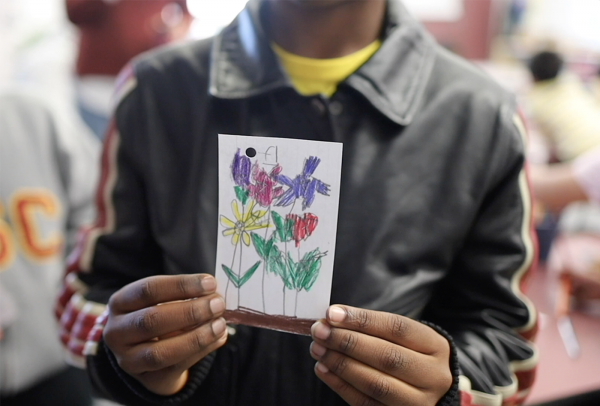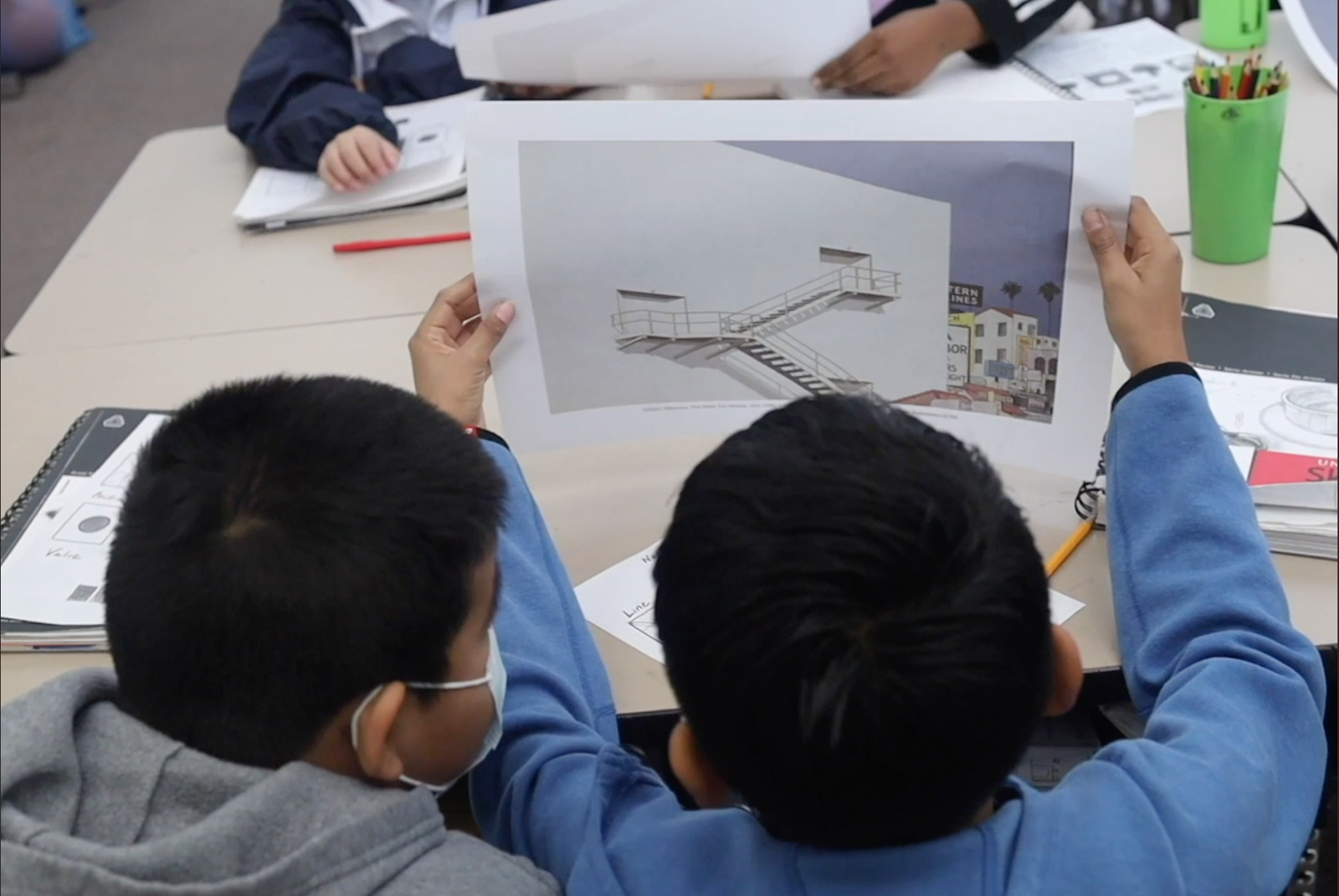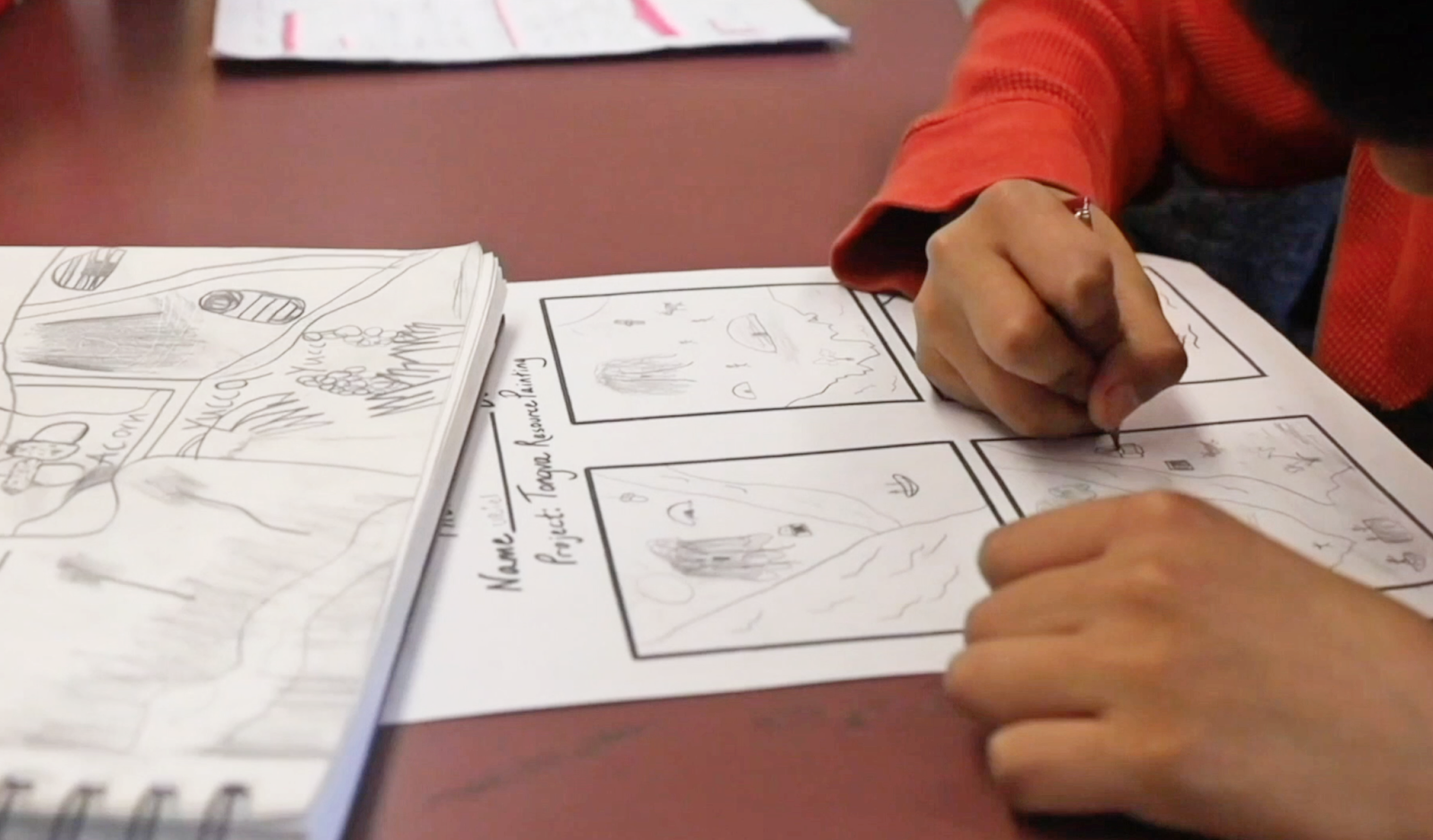“I want to improve my students’ critical thinking skills through work that they're engaged with where they're actually creating something. I want my students to have successes and run into obstacles which will challenge them to be problem solvers. I think engaging in developing creativity and critical thinking skills supports social emotional learning skills because as we learn how to address failure, as we learn how to address mistakes, we build our confidence. As we are able to talk about the work we've created, we get to know ourselves better. And as we see creativity as a way to help us through life struggles, we develop the social emotional skills and strengths that we all need as we move into an uncertain future.” —Katherine Theisen, third-grade teacher, Charles White Elementary School
Arts integration is a powerful tool and approach to teaching that fosters meaningful connections between the arts and other areas of learning. It promotes critical thinking, supports social emotional learning, and helps teachers and students develop confidence in the arts. In an arts-integrated lesson, an arts standard and a standard from another content area, such as English Language Arts, Math, Science, or Social Studies, are taught together. Both standards inform the objectives of the lesson, and the result is a better understanding of both subjects.
Developing an arts-integrated lesson doesn’t require having an artistic background, a budget for art supplies, or the time it takes to plan a separate art lesson. It encourages integrating the arts with a lesson or unit you already have. What made that lesson successful and why? What areas of the lesson were challenging for the students? Could those areas be channeled through the arts?
In the words of Raquela Bases, fourth-grade teacher at Charles White Elementary School: “A successful arts-integrated lesson is one that gives students the chance to really engage with material they’re learning and to take ownership over it, in part because they enjoy the process of creating art or talking about art.”
An Introduction to Arts Integration is a free online course created by the LACMA Education Department and first-through-fifth-grade teachers at Charles White Elementary School. LACMA Teaching Artists began working with teachers there in 2020 to develop arts-integrated lessons that would engage and inspire the magnet school’s students. So far, the results have demonstrated that arts integration does exactly that—it engages, inspires, and also supports broader academic goals.
In the course, participants have the opportunity to engage with a series of video lessons shot in the classrooms of these teachers. Each video features a different teacher sharing their perspectives, challenges, and insights implementing arts integration in their curriculum. Through guidance from the teachers as well as downloadable lesson plans, resources, and activities that feature artworks from LACMA’s permanent collection, course participants will learn how to navigate the different components of arts integration while developing their own arts-integrated lesson plan. While the course focuses on first-through-fifth grade visual arts integration with English Language Arts (ELA), English Language Development (ELD), History-Social Science, and Math, the course material can be adapted for any subject or grade level.
We are excited to share our collective learning with K–12 teachers so that they can more easily integrate visual art in their own classrooms. Check out the trailer below for a sneak peek of the course and sign up for free on Teachable!
After completing An Introduction to Arts Integration, extend your learning with our other new online course, Visual Storytelling: Drawing, Comics, and Animation.





